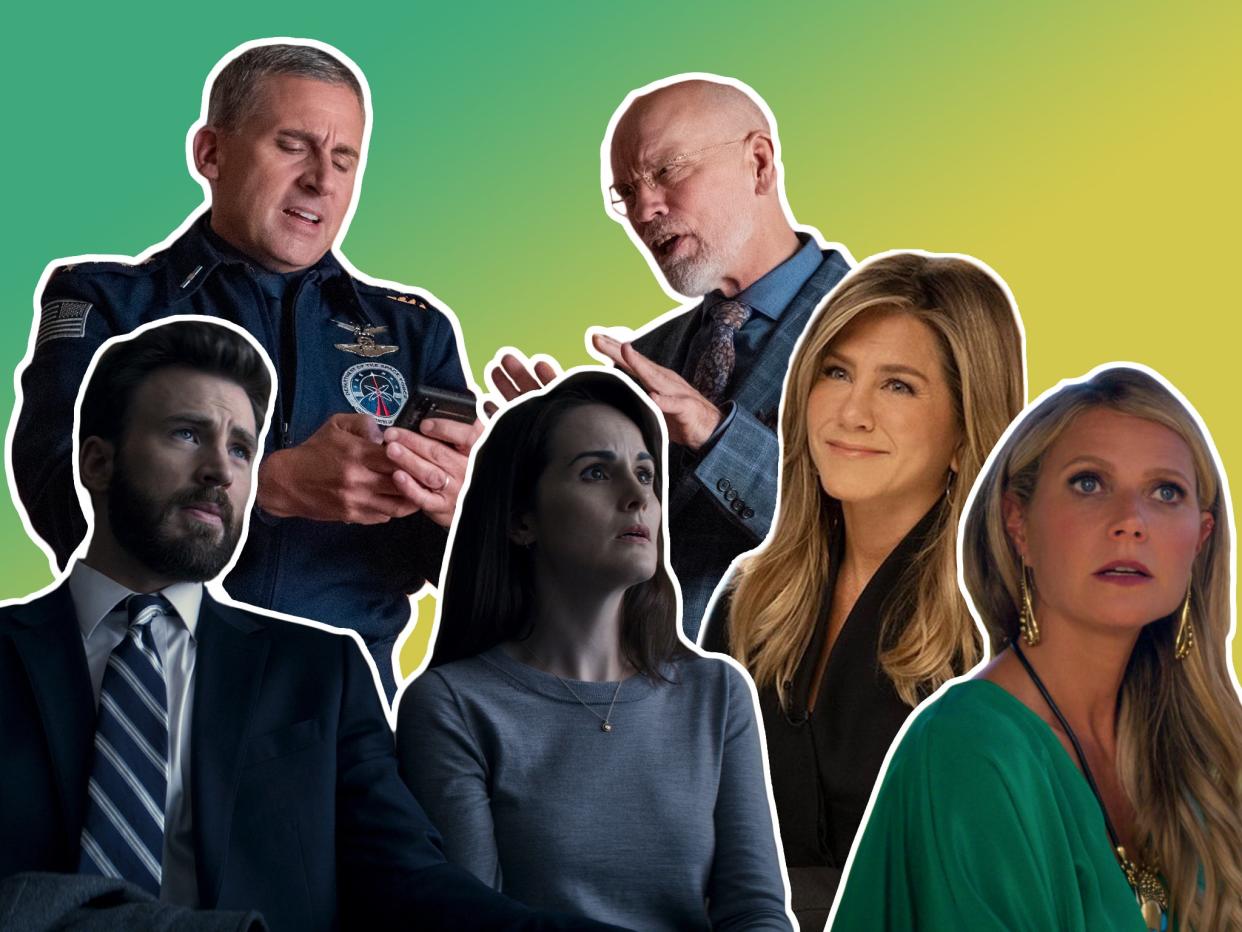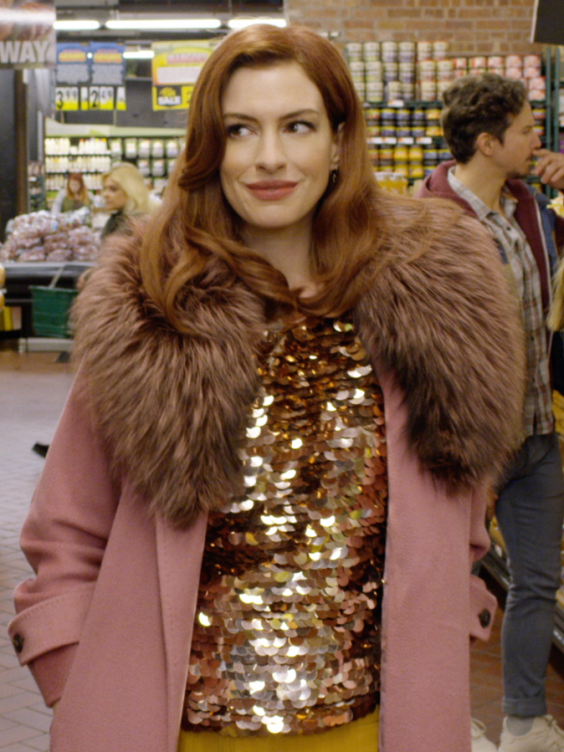Too many stars and too much money is killing television

In a 1967 episode of the original Star Trek, William Shatner’s Captain Kirk is buried under a large pile of tiny, furry space critters known as Tribbles. Because Star Trek had a special effects budget made up of, at best, some old packing materials and $30 worth of sticky-back plastic, only a few of the creatures were able to animatronically move. The rest just sat there on Shatner’s shoulders, small balls of fluff we had to imagine were somehow sentient. Star Trek was cheap. People still loved it.
The same amount of money it cost to produce a classic episode of Star Trek could probably get you Jennifer Aniston’s right arm in today’s television landscape. Forget the Golden Age of TV; we are squarely in the age of Too Expensive TV. Pricey movie stars dominate our small-screen casts, sets are elaborate, concepts bloated, and every new television series looks as if it cost the GDP of a small country. The only problem? Most of them are terrible.
Last week, Netflix launched Space Force, a star-studded comedy series inspired by Donald Trump’s formation of a sixth wing of the US military. No one knows quite how much it cost to make, but its star Steve Carell, still a hot commodity a decade after he left The Office, is said to have earned at least $1m per episode. Surrounding him in the show’s ensemble are names including John Malkovich and Lisa Kudrow, while the series was co-created by Parks and Recreation showrunner Greg Daniels – none of whom would have come cheap. It also looks like a blockbuster movie, full of location shooting, eye-watering production design and more CGI than anyone really needs (a significant proportion of its second episode revolves around a computer-generated monkey).
Space Force is also a galactic misfire. Over the course of its 10-episode first season, it never settles on a consistent tone or point of view. Vacillating between zany satire and earnest jingoism, it seems to want to be political, but is also too afraid to go after any specific target. Despite its cast, as well as the presence of wonderful comedy supporting players like Ben Schwartz, Jane Lynch and the late Fred Willard, no one is very funny. Reviews have been scathing. “This is material for a sketch, rather than a whole series,” wrote The Independent. “Space Force fails to launch,” sniped Rolling Stone.
A lot of television seems to be like this now. Apple TV+ reportedly paid $300m for two seasons of The Morning Show, a strangely flat network-news drama starring Aniston, Carell and Reese Witherspoon. Netflix’s two hollow Ryan Murphy extravaganzas, the revisionist Tinseltown epic Hollywood and the garish satire The Politician, are allegedly among the most expensive series ever made. Every episode of Disney+’s laborious Star Wars series The Mandalorian came with a $15m price tag, despite a whole lot of it being masked people talking to one another in the desert. And an admittedly adorable Baby Yoda.
A-list talent is also everywhere, even if no one’s watching. Amazon’s Modern Love lured Anne Hathaway to TV, along with Dev Patel and Andy Garcia, but struggled to generate any online buzz. New US streaming service HBO Max launched in May with a patchy Anna Kendrick series titled Love Life. Apple TV+, meanwhile, has dropped two mystery thriller series with big names attached: Chris Evans and Michelle Dockery in Defending Jacob, and Octavia Spencer and Aaron Paul in Truth Be Told. You’d be hard pressed to find many who had tuned in to either.
That all of these series stem from streaming platforms is no coincidence. Netflix, which pledged to invest $17bn in original content in 2020, has entirely reshaped television since it moved away from home DVD rental and into streaming in 2013. Its popularity has inspired other corporations, all of which are investing billions of dollars in content hopefully glitzy enough to lure consumers their way. In the pipeline are Apple TV+’s Band of Brothers sequel Masters of the Air (price tag: $20m per episode), Disney’s various Marvel spin-off series ($150m per season, it’s been said) and Amazon’s Lord of the Rings series (which cost $250m for the rights alone).
It’s debatable whether any of this is working, though. Quibi, a short-form streaming app boasting original content designed to be watched in short chunks on the go, flopped in April. Despite more than a billion dollars in investment, and the participation of names including Steven Spielberg, Jennifer Lopez, LeBron James and Idris Elba, it tumbled out of the top 50 most popular downloads on iTunes a week after its launch. Like many within streaming’s fresh upstarts, bosses at Quibi assumed subscribers didn’t need interesting ideas, but rather just a large pile of recognisable faces (Witherspoon reportedly earned $6m to narrate a “feminist” animal kingdom docuseries titled Fierce Queens).

The Morning Show, designed as AppleTV+’s launch series, similarly existed as a vague concept starring Aniston and Witherspoon long before anyone knew what it wanted to say. First announced in 2017, it had dropped its showrunner, replaced him with another, revamped its entire premise and somehow accumulated 24 different producers by the time it made it to air. Every bit of uncertainty and behind-the-scenes rejigging was visible on screen.
Even Netflix has become guilty of such an approach to storytelling. Space Force burnt up probably because it was fully financed based on nothing but its title. In 2019, Carell attended a meeting with Netflix brass during which he was asked if he found the term “space force” as funny as they did. Yes was the answer. Carell then called Daniels to see if he wanted to develop something from it. Inexplicably, a show was born.
There are signs that this is the worst approach to television. If anything has captivated viewers this summer, it’s been Normal People, a low-key, relatively thrifty drama about sex and class and mental health. Adapted from Sally Rooney’s bestselling novel, it was anchored entirely by two unknown actors. Paul Mescal, who probably cost as much as Witherspoon’s dodgy Morning Show wig, has become inescapable as a result. He and co-star Daisy Edgar-Jones are also proof that stardom and expense isn’t what attracts modern audiences. Normal People isn’t alone. Fellow critical darlings Chernobyl, Derry Girls, Succession, PEN15 and Fleabag – all of which starred (at least upon their debuts) complete unknowns or people you only vaguely recognised from other things – didn’t cost an arm and a leg, either.
It also brings to mind how much of this is a fool’s errand. Historically, great television is often the product of its strivers – the writers and showrunners who made genius on a shoestring, put up with limited resources and had to beg for higher budgets and more creative freedom. We fell in love with Star Trek, Buffy and The Office because they were scrappy outsiders bursting with ambition, not because they were dripping with grandeur. Meanwhile, risky game-changers such as Sex and the City, The Sopranos and Line of Duty earned their budgets over time. They didn’t arrive as popular kids with all the money in the world yet no reason for being. It’s something that Disney, HBO Max and every other ambitious new content farm would be wise to take on board. If they survive long enough, that is.

